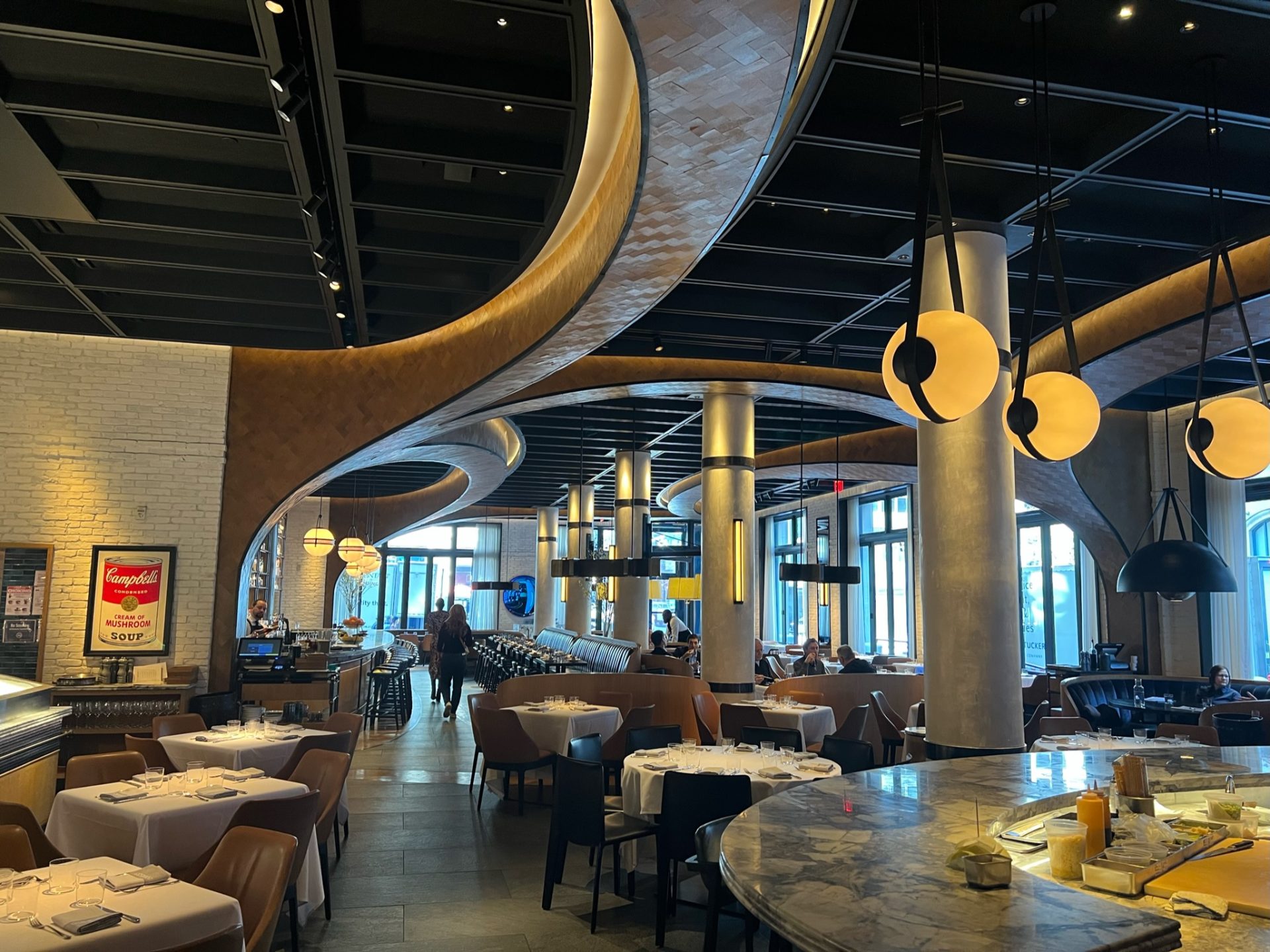Pan Asian Restaurant Islamabad: Discover Exquisite Asian Food
Pan Asian Restaurant Islamabad: Discover Exquisite Asian Food
Blog Article
Savor Authentic Asian Cuisine With a Pan-Asian Twist for a Cooking Adventure
Embarking on a cooking trip through genuine Oriental food, enhanced with a Pan-Asian spin, uses an unique possibility to discover the abundant tapestry of tastes that define the area's diverse culinary practices. As you consider these luring recipes, take into consideration the social narratives and historic impacts that shape them, each bite using a story waiting to be found. Best ambiance restaurants Islamabad.

Discovering Pan-Asian Flavors
In the world of global gastronomy, Pan-Asian food stands out for its amazing diversity and the unified interplay of tastes from various Asian cultures. This cooking technique celebrates the distinct active ingredients and abundant traditions located across the continent, developing a tapestry of tastes that is both satisfying and interesting. Key to Pan-Asian cuisine is its capacity to stabilize different tastes-- wonderful, salty, spicy, and sour-- while highlighting the freshness and top quality of each active ingredient.
From the umami-rich soy sauce of Japan to the fiery chili peppers of Thailand, Pan-Asian food provides a comprehensive combination of flavors. These aspects are commonly integrated in creative ways, boosting recipes with layers of intricacy. For instance, the usage of aromatic herbs such as lemongrass and cilantro, typical in Vietnamese and Thai cuisine, adds a refreshing illumination to dishes, while the incorporation of coconut milk delivers a creamy, rich texture.
The focus on fresh fruit and vegetables and aromatic spices makes sure that each meal is not just a banquet for the palate yet likewise for the detects. Pan-Asian cuisine welcomes restaurants to start a cooking journey, discovering the large and differed landscapes of Eastern gastronomy with every bite.
Combination Dishes to Try
While Pan-Asian food is commemorated for its typical flavors, the contemporary culinary landscape is significantly accepting fusion dishes that mix these timeless components with influences from various other regions. This cutting-edge technique not only honors the rich heritage of Oriental culinary arts however also introduces unique taste experiences that attract modern tastes.
An archetype of such a combination dish is the Korean-Mexican taco, where marinaded bulgogi beef is wrapped in a cozy tortilla, covered with kimchi and a zesty gochujang-infused salsa. This combination weds the vibrant, mouthwatering flavors of Korea with the vibrant, fresh aspects of Mexican food. In a similar way, sushi burritos have actually gotten appeal, joining together the delicate virtuosity of Japanese sushi with the hearty, hand-held convenience of a burrito, often including fusion components like tempura shrimp and avocado with a drizzle of wasabi mayo.
One more noteworthy dish is Thai curry ramen, which infuses the velvety, fragrant seasonings of Thai curry into the soothing broth of standard Japanese ramen, creating an unified blend that entices the detects. These combination recipes extend beyond simple novelty; they stand for a culinary discussion in between cultures, urging expedition and development in the globe of Pan-Asian food.
Important Active Ingredients and Spices
To truly value Pan-Asian food, one have to understand the important active ingredients and seasonings that form its foundation. This diverse culinary design attracts from an abundant tapestry of Oriental traditions, utilizing an unified mix of flavors and structures. Key components include soy sauce, fish sauce, and oyster sauce, which impart a tasty umami depth necessary to Asian meals. Corresponding to these are rice vinegar and mirin, providing a fragile acidity and sweetness.
Fragrant aspects are essential, with ginger, garlic, and lemongrass being common across different Pan-Asian recipes. These active ingredients supply a great smelling base that improves the intricacy of flavors. Spices such as star anise, cardamom, and cinnamon introduce heat and personality, echoing impacts from regions like China and India.

Cooking Strategies and Tips
Grasping the art of Pan-Asian food requires experience with its distinct food preparation strategies, each contributing to the dynamic tapestry of tastes this cooking custom is commemorated for. Central click for source to these methods is the stir-fry, a quick cooking technique that maintains the nutritional stability and brilliant colors of components. Using a wok, the stir-fry method permits even warm circulation, vital for attaining the characteristic structure and taste balance of Pan-Asian dishes.
Another essential technique is steaming, especially widespread in Chinese food. This mild method keeps the all-natural tastes and nutrients of components, making it ideal for seafood and veggies. Dumplings, a precious staple, often gain from steaming, causing soft, succulent appearances.
Barbecuing, also important, presents great smoky midsts to recipes such as Korean bulgogi or Japanese yakitori (asian fusion restaurant). This strategy typically entails marinating active ingredients, enabling flavors to permeate deeply before cooking over an open fire or hot plate
Finally, understanding the art of stabilizing flavors-- sweet, sour, salted, bitter, and umami-- is important. Appropriately layering these elements can raise a meal from regular to extraordinary, supplying a complex and pleasing cooking experience that embodies the significance of Pan-Asian food.
Eating Experiences Worldwide
Around the world, Pan-Asian cuisine uses an unequaled eating experience, commemorated for its rich tapestry of tastes and vivid discussions. This cooking phenomenon has gone beyond social borders, catching the hearts and tastes buds of food fanatics worldwide. In kfc chicken multicultural cities fresh York, London, and Sydney, Pan-Asian restaurants function as fusions where cooking traditions from Thailand, Japan, China, and past assemble, offering restaurants with an eclectic mix of recipes that highlight the region's diversity.
The international allure of Pan-Asian food hinges on its ability to offer both credibility and development. Cooks skillfully marry standard active ingredients such as lemongrass, soy sauce, and miso with contemporary methods, causing dishes that are both acquainted and refreshingly brand-new. This combination enables diners to get started on a cooking journey that respects heritage while embracing modernity.
Additionally, eating experiences are boosted through attentively made atmospheres that mirror the ethos of Pan-Asian aesthetics. From minimal Japanese-inspired interiors to dynamic Thai-themed areas, each dining establishment uses an unique atmosphere that matches the culinary offerings. Consequently, patrons are not merely consuming a meal yet partaking in a cultural experience, making Pan-Asian eating a genuinely global phenomenon.
Final Thought
The exploration of Pan-Asian cuisine provides an extensive understanding of the detailed interaction of tastes and cooking customs across Asia. By welcoming fusion recipes such as Thai curry ramen and sushi burritos, the cooking trip not only highlights the versatility of standard active ingredients but additionally showcases ingenious modern-day methods. This gastronomic journey, enriched by cooking techniques and crucial spices, provides a special possibility to appreciate the social variety and culinary creativity that specify Pan-Asian cuisine on a global range.
Embarking on a culinary trip via genuine Eastern food, boosted with a Pan-Asian spin, supplies a distinct opportunity to discover the abundant tapestry of tastes that specify the region's diverse cooking traditions.In the realm of worldwide gastronomy, Pan-Asian food stands out for its impressive diversity and the unified interplay of flavors from various Asian societies. Trick to Pan-Asian food is its capacity to balance different tastes-- pleasant, salty, spicy, and sour-- while highlighting the freshness and quality of each component.

Report this page